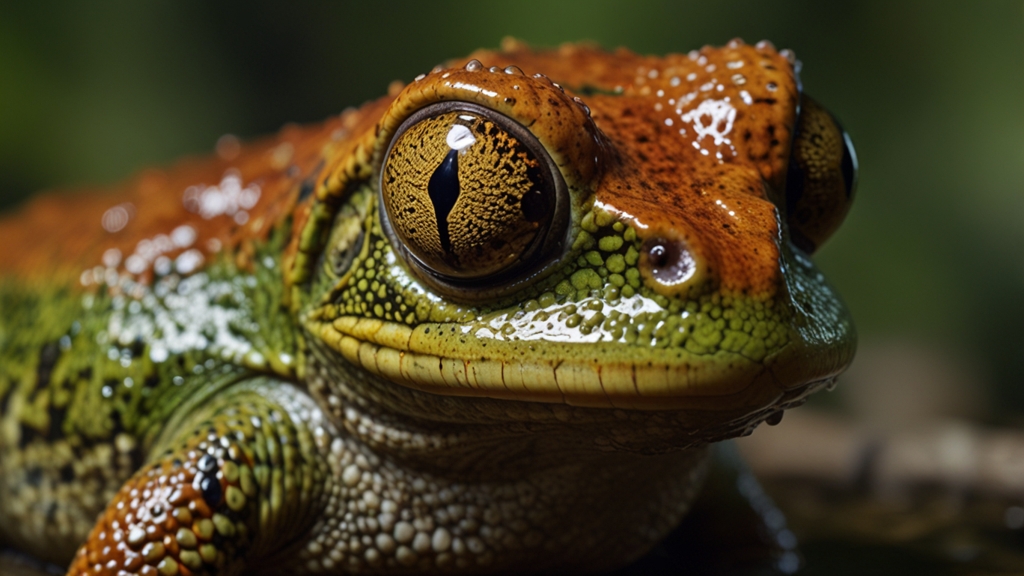Unlocking the Secrets of Amphibian Skin: Nature's Miracle
Amphibians are often seen as the underdogs of the animal kingdom, fascinating yet frequently overlooked. However, beneath the seemingly simple exterior of their moist, glistening skin lies a world bustling with complexity and wonder. Amphibian skin is not just a protective barrier but a multi-functional marvel of nature. Its unique properties hold significant potential for medical science, environmental monitoring, and our understanding of evolutionary biology.
The Multifunctional Epidermis
At first glance, amphibian skin may not appear particularly noteworthy. Yet, this thin layer is a powerhouse of functionality, performing tasks that go far beyond mere protection. Amphibian skin aids in respiration, hydration, and even thermoregulation. Unlike most animals, amphibians can absorb oxygen directly through their skin, a feature crucial for their survival in waterlogged habitats where lungs alone may not suffice.
Additionally, amphibian skin secretes a variety of substances that help in maintaining moisture levels, thus preventing desiccation. This moisture-retentive quality is a critical adaptation for life both in water and on land. Moreover, amphibians employ their skin to facilitate the regulation of their body temperature, further highlighting its importance in their survival.
A Chemical Arsenal
One of the most fascinating aspects of amphibian skin is its role as a chemical arsenal. The skin glands produce an array of bioactive compounds, ranging from antimicrobial peptides to potent alkaloids. These substances serve multiple purposes, from warding off predators and parasites to combating infections.
Some antimicrobial peptides found in amphibian skin have shown promise as potent antibiotics, offering hope in the fight against antibiotic-resistant bacteria. These natural compounds are now being studied for their potential applications in modern medicine.
Amphibians, such as the poison dart frog, even synthesize toxins strong enough to deter large predators. These defensive chemicals are so effective that indigenous tribes have historically used them to poison their hunting darts. The diversity and potency of these compounds elevate amphibians into a critical area of pharmacological research.
Indicators of Environmental Health
Amphibians serve as essential bioindicators in environmental studies. Their permeable skin makes them extremely sensitive to pollutants and changes in their ecosystems. A decline in amphibian populations often signals environmental distress, prompting urgent ecological assessments.
Scientists have observed that the health of amphibian populations can reflect broader environmental conditions, making their study a crucial element in monitoring the impact of climate change, pollution, and habitat destruction.
Their unique physiology allows amphibians to act as early warning systems, highlighting areas of concern long before other species are affected. This sensitivity underscores the importance of amphibians in maintaining ecological balance and health.
Evolutionary Insights
The complexity of amphibian skin also offers remarkable insights into evolutionary biology. The diverse mechanisms that amphibians have developed to navigate their environments provide a window into the adaptive strategies employed by life on Earth. By studying these unique adaptations, scientists gain a deeper understanding of the processes that drive evolution and survival.
"Amphibian skin is a living laboratory," says Dr. Sarah Henson, a herpetologist. "Every time we uncover a new function or compound, we're reminded of the incredible ingenuity of natural selection."
Future Prospects
The ongoing research into amphibian skin promises a range of exciting applications. From new antibiotics to bio-inspired materials, the potential is vast. However, amphibian populations worldwide are under threat due to habitat loss, climate change, and disease. Protecting these remarkable creatures is not only crucial for the preservation of biodiversity but also for the untapped potential their study holds.
In conclusion, amphibian skin is much more than a simple covering; it is a testament to the intricate and wondrous ways nature equips organisms for survival. As research continues to unlock its secrets, we move closer to understanding and harnessing the full range of benefits this natural miracle has to offer.








